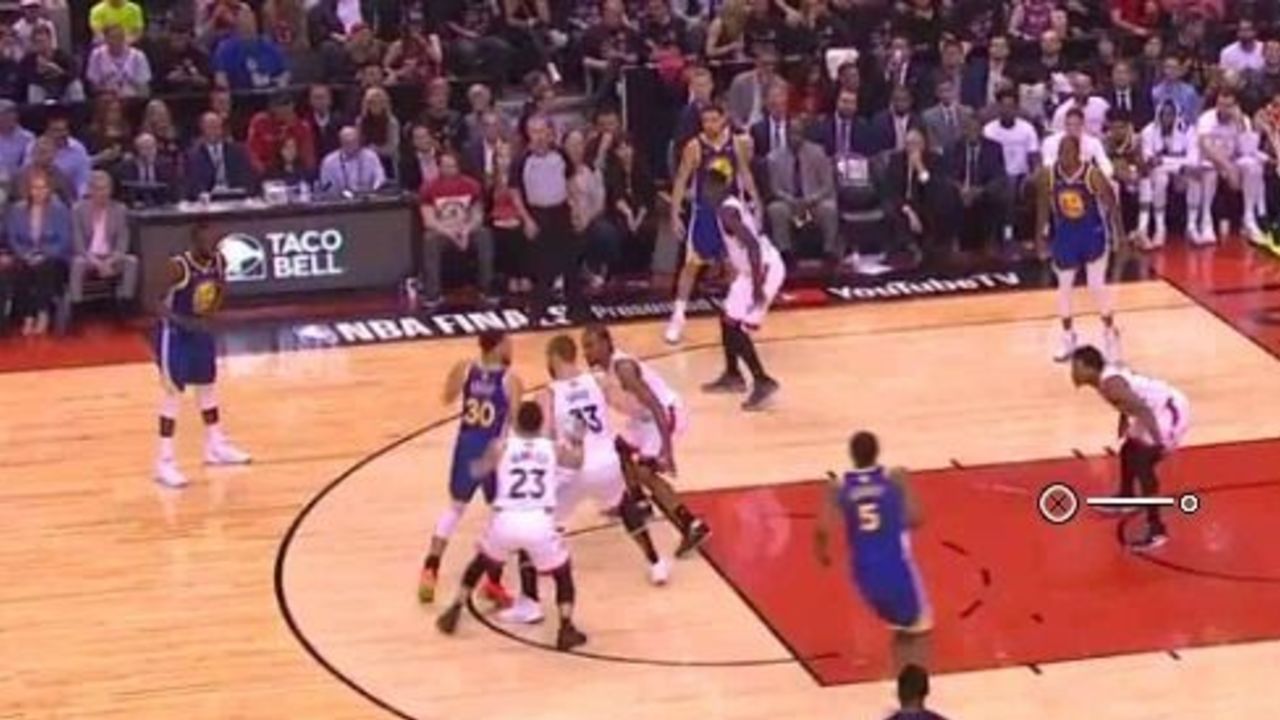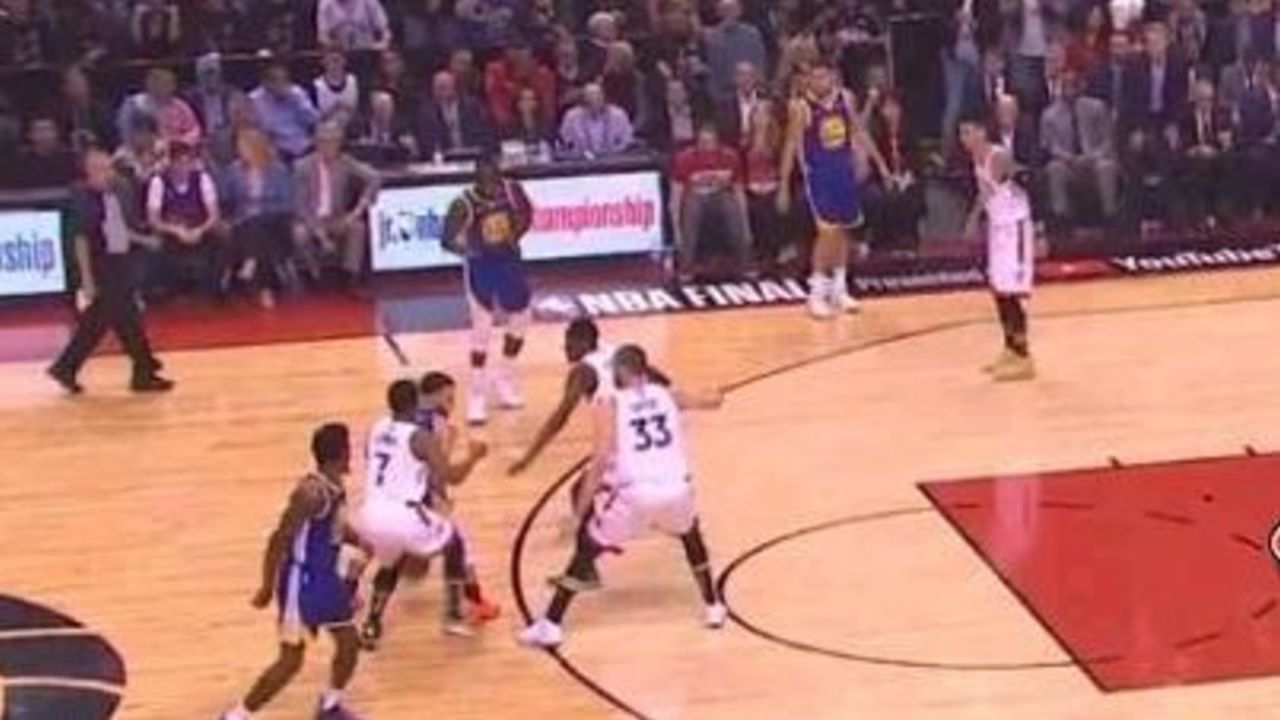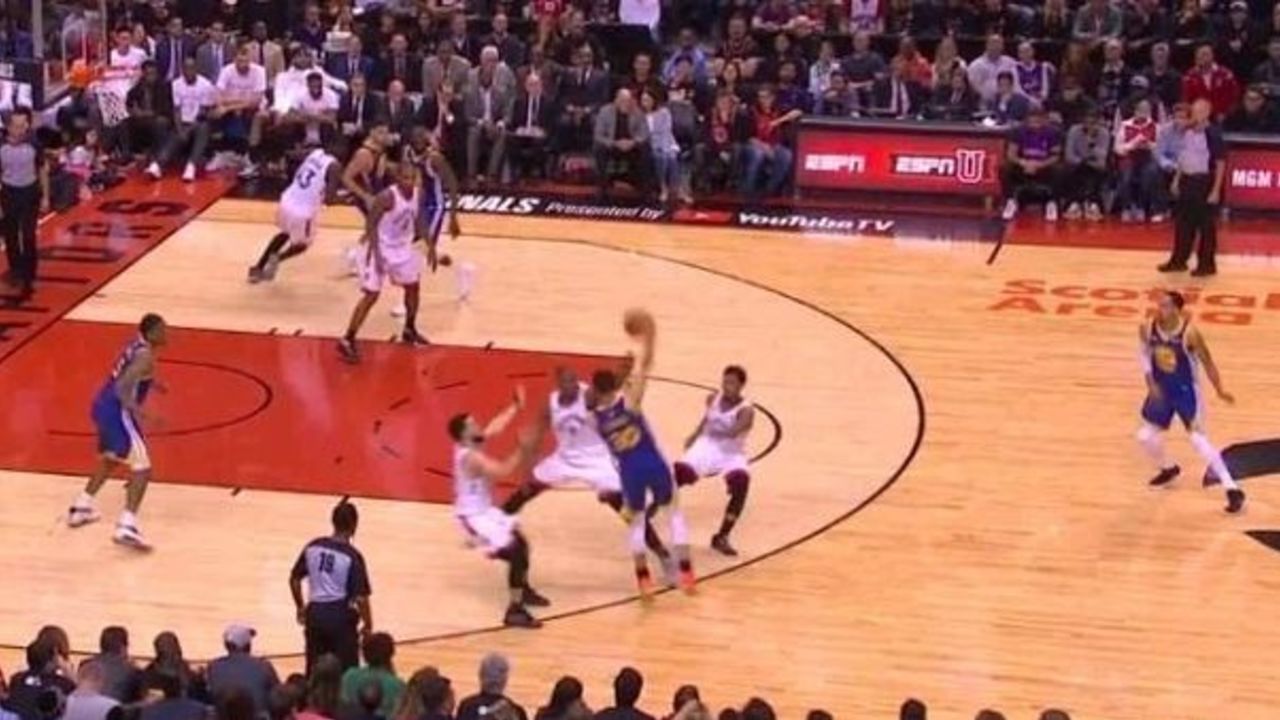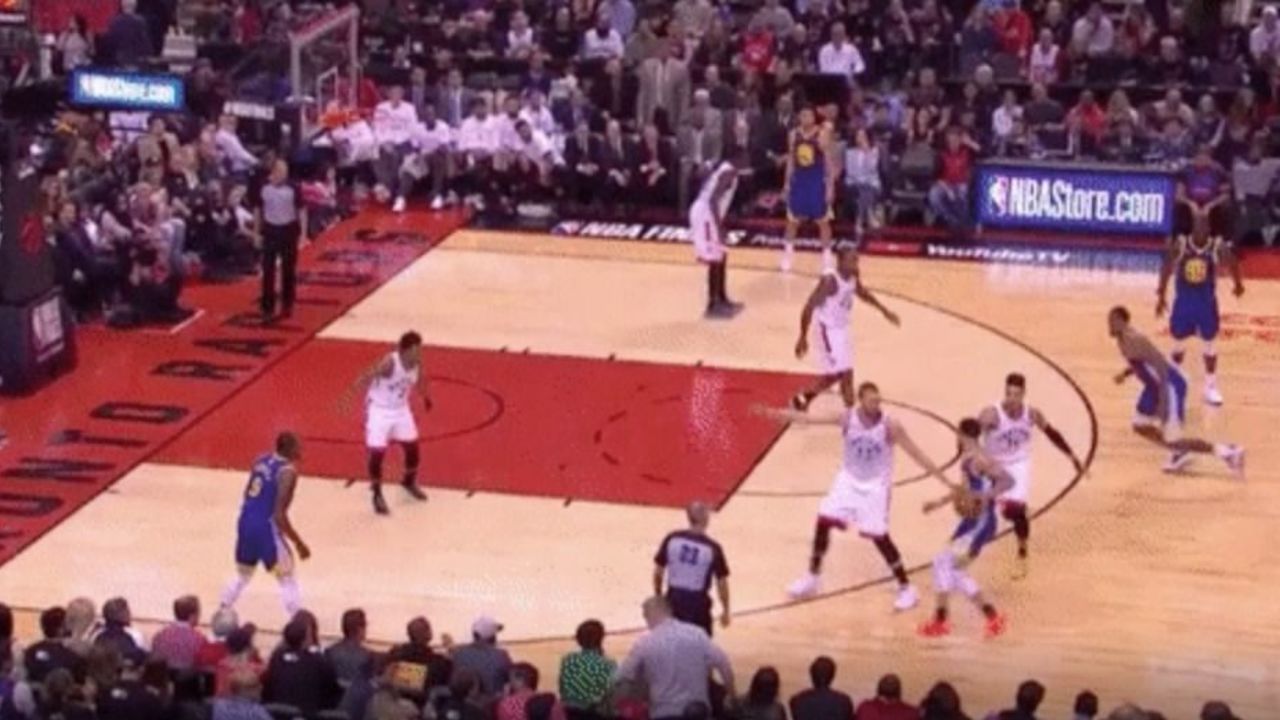How the Raptors smothered the Warriors' half-court offense in Game 1
The Golden State Warriors are playing in their fifth consecutive NBA Finals, and for the first time during that historic run, they find themselves in an 0-1 hole after Game 1. The Toronto Raptors, in the first Finals game in franchise history, led for all but three minutes and 39 seconds in their 118-109 win over the defending champs Thursday night.
As has been the case for virtually their entire playoff run, the Raptors won due to their implacable half-court defense. One of the biggest questions coming into the series was whether the defense - which had stifled the talented but predictable offenses of the 76ers and Bucks - would be able to do the same against Golden State's whirring, perpetual-motion machine. Sample-size caveats apply, but the first impression was a resounding yes.
After the game, Warriors coach Steve Kerr called out his team's negligent transition defense - which had been partially responsible for letting Pascal Siakam go off for 32 points on 14-of-17 shooting - but the truth is, their half-court offense was just as much of a concern. Excluding second-chance plays (on which they scored an absurd 1.87 points per possession), the Warriors managed just an 83.9 offensive rating against the Raptors' set defense, their lowest mark of the postseason and virtually the exact same mark Toronto held Milwaukee to in the Eastern Conference finals, according to Cleaning the Glass.
A few things happened in Game 1 that probably aren't sustainable - Siakam's dominance of Draymond Green chief among them - but the eye test didn't suggest an unrepeatable defensive performance from the Raptors, at least not while Kevin Durant remains sidelined. Against a team with zero reliable shooters outside Steph Curry and Klay Thompson, the Raptors were able to key in on the Warriors' initial actions, then rotate and recover fast enough to snuff out plan B and C.
Toronto ran the Warriors off the arc and contested everything in the mid-range and floater range, where Golden State combined to shoot 7-of-22. They forced 17 turnovers, which helped fuel the transition attack that so vexed Kerr.
Fifteen of the Warriors' 31 3-point attempts were classified as "wide-open" by NBA.com, but only three of those were taken by Curry or Thompson, and all three came on scramble plays after loose balls or offensive rebounds. The Raptors need to do a better job of finding those guys immediately after resets, to be sure, but that just illustrates how difficult it was for the Warriors to get the shots they wanted in the half court.
Here are a few other specific ways the Raptors were able to bottle up the Warriors:
VanVleet's tireless man defense

Just as he did in the Raptors' dominant December win in the Bay, Fred VanVleet came in and played starter's minutes off the bench. He spent the bulk of those minutes hounding the indefatigable Curry; picking him up high on the floor, chasing him through a maze of screens, tracking his relocations, running him off the arc, and contesting - and in one case even blocking - his shot from behind. It got to the point where the Warriors started screening VanVleet in the backcourt just to give Curry some breathing room.
According to NBA.com's (admittedly noisy) matchup data, VanVleet held Curry to four points on 1-of-6 shooting across 33 possessions as his primary defender. Curry's lack of volume in those possessions was almost as notable as his lack of production.
VanVleet spent a large chunk of the game sharing the backcourt with Lowry, and the two sub-6-footers continued to not only survive but thrive defensively, playing to an 87 defensive rating and plus-25.8 net rating. (Another way this game highlighted the value of the Raptors' defensive versatility: In the VanVleet-Lowry minutes, it was usually Siakam guarding Thompson. You can count on one hand the number of power forwards in the league who are capable of chasing Thompson around the perimeter, but Siakam's combination of speed and length made him a perfect antidote.)
Lowry's prescient help defense
The value of VanVleet so capably handling the Curry assignment and Siakam hanging with Thompson, was that it freed up Kyle Lowry to take on rover duties while guarding (or not guarding) Andre Iguodala, Shaun Livingston, and other non-shooters.
I wrote before the series that Lowry was probably the Raptors' best help defender, and he did nothing to dispel that suggestion in Game 1. His anticipation is second to none, and with Iguodala missing all four of his 3-pointers - most of them wide-open, none of them particularly close - Lowry was free to get disruptive away from the ball without repercussions.
It seemed like every time the Warriors tried to drive, he was there. His back-line rotations were a big reason the Raptors were able to send two to the ball on the perimeter. Strong side or weak side, Lowry made sure he entered the fray. Naturally, that included stepping in to draw two charges.
Lowry had just seven points on 2-of-9 shooting and was still a game-high-tying plus-11 in his 36 minutes. Hard to imagine a more fitting Finals debut.
Building a wall around Steph
The Raptors got used to building walls in the conference finals when they were tasked with containing Giannis Antetokounmpo.
Though he represents a completely different kind of defensive challenge, Curry encountered a similar wall of Raptors at various points throughout Game 1.



(Courtesy: ESPN)
Taking advantage of some poor spacing, the Raptors were able to stunt at Curry from up top and crowd him enough to force the ball out of his hands without compromising their ability to recover. Even with 14 free-throw attempts, his usage rate was a relatively modest 29 percent, down from 32.7 percent in the five previous games following Durant's injury. Given the dearth of individual shot creation around him, tamping down Curry's usage is probably a good thing for the Raptors.
Neutralizing the pick-and-roll
After using it to vaporize the Rockets and Blazers, the Warriors didn't get a whole lot out of the pick-and-roll against the Raptors.
One way to defend the dreaded Curry-Draymond pick-and-roll is to discourage the Warriors from even running it, which is what the Raptors essentially did by sticking Kawhi Leonard on Draymond. Wary of inviting Kawhi to switch onto Curry, the Warriors opted to screen with their traditional bigs more often in order to drag the slower-footed Marc Gasol into the action instead.
But Gasol counterattacked with aggressive, physical, and intelligent work on the perimeter. Whether it was just coming up high enough to challenge Curry's pull-up jumper, or full-on trapping against the sideline, Gasol hardly took a false step. He didn't let Curry turn the corner, and blotted out his passing angles:
You can see in those clips that VanVleet was involved in a bunch of those actions, too. The pick-and-roll demands just as much harmony and cooperation from those defending it as it does from those running it, and Gasol and VanVleet were in perfect concert all night, knowing when to hedge and recover, when to blitz, and when to play it straight up.
It's worth noting, too, that part of what made those traps viable was the lack of playmaking on the part of the Warriors' bigs - particularly Jordan Bell, who offered next to nothing in his token start. The Raptors just aren't ever going to be concerned with him (or even Kevon Looney) catching the ball on the short roll.
What worked or can work for the Warriors?
- They burned the Raptors a few times with their split action, specifically this iteration, with Looney entering the ball to Iguodala in the post, then turning to screen for either Curry or Thompson and engaging Gasol before slipping to the rim. Looney really needs to be starting.
- The Raptors never seemed quite sure what to do when Curry and Thompson screened for each other. In one instance, Curry screened for Thompson under the basket, and with both defenders facing the baseline while giving that dummy action their undivided attention, Iguodala barreled down the lane for an uncontested dunk. On another occasion, Curry screened for Thompson on the wing, both defenders followed Thompson, and Curry popped open for a three. Later on, they threw in a wrinkle, with Curry setting a pindown for Thompson while Looney mashed Lowry with a back screen to prevent him from switching.
- DeMarcus Cousins didn't make a significant impact overall and was about two steps slow defensively, but he did have some nice moments. It helped to be reminded of what a sweet passer he can be. He drew plenty of extra attention in the post, and was able to find Thompson twice on back cuts and Jerebko on a spot-up in the corner as a result. Question is, how many quality minutes can they actually get from Cousins? Because if they can get 12-15 from him plus a solid 30-35 from Looney until Durant returns to make the Hamptons Five whole again, that would work better than trying to shoehorn Bell in for no reason.
- Curry should probably look to short the pick-and-roll more as a counter to Toronto's traps rather than trying to force pocket passes that aren't there. Iguodala would've been a good release valve here:

- Offensive rebounding was huge for the Warriors, not just because it helped them win the possession battle but because their second-shot offense was basically unstoppable. But can they afford to amp up their aggressiveness in that regard when their transition defense was already so poor?
- Kerr should really consider trimming his rotation.